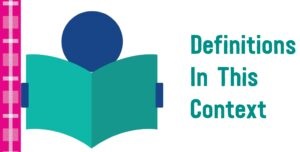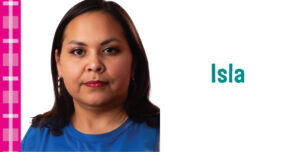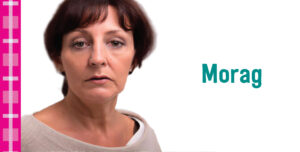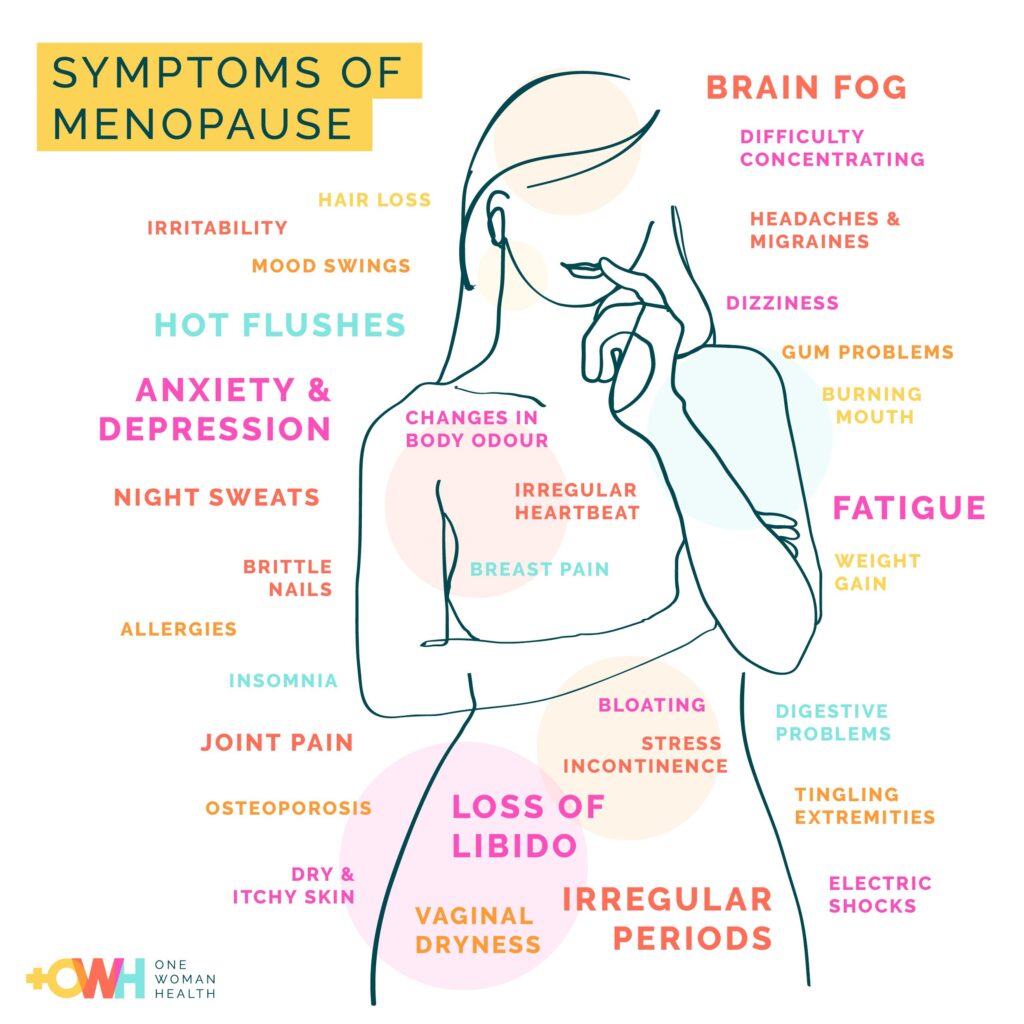The menopausal transition can impact different aspects of health, including cardiovascular health. Understanding the relationship between menopause and cardiovascular health is very important for supporting overall wellbeing during and after this stage of life.
Research has shown that the transition to menopause is associated with a higher likelihood of developing certain cardiovascular disease risk factors, and therefore cardiovascular disease. Additionally, the risk for cardiovascular disease is even greater for individuals who experience early menopause (menopause before 45 years old).
Why does this happen? It is because oestrogen has a protective effect on the heart and during menopause the levels of oestrogen fall.
Click on the different cardiovascular disease risk factors associated with menopause to learn more about them.
- For a refresher on the risk factors for developing cardiovascular disease, refer back to this page in the module.
Menopause is when an individual’s period (menstrual cycle/menstruation) stops (amenorrhea). This is because their ovaries no longer release an egg (ovulation) and there has been a decrease in hormone levels (oestrogen levels) in their body.
Disclaimer: Menopause affects anyone who has periods (menstrual cycle)
Please click on the categories below to learn more about menopause.
What is ASSIGN?
- ASSIGN is a risk assessment tool
- It is a way to calculate someone’s 10-year risk of having a heart attack or stroke.
- Developed in 2006 at University of Dundee, Scotland by professors, H, and Scottish Intercollegiate Guidelines Network group on cardiovascular risk estimation
- Cardiovascular risk score that was chosen by Scottish Intercollegiate Guidelines Network and Scottish Government Health Directorates
- An ASSIGN score over 20 is currently considered high risk for developing cardiovascular disease
To learn more about ASSIGN, please visit About – ASSIGN Score – prioritising prevention of cardiovascular disease (assign-score.com)
Disclaimer: There may be more or less tests and examinations done than listed above based on the findings and/or a healthcare professionals’ discretion.
Disclaimer: Q-RISK is the cardiovascular risk assessment tool in England
- To learn more about Q-Risk, click here.
We’ve covered what cardiovascular disease is, but what causes it?
There isn’t a single, specific cause of cardiovascular disease. Instead, there are several factors that can increase an individual’s possibility of developing CVD. These are referred to as ‘risk factors’ and they increase your chances of developing symptoms.
The more risk factors that someone has, the more likely they are to get cardiovascular disease.
- Disclaimer: The risk of developing cardiovascular disease is never 0 and regardless of other risk factors, risk naturally increases with age.
In some parts of the UK people over 40 years old will be invited to an NHS Health Check at their GP’s every 5 years. The health check will assess someone’s individual cardiovascular risk and advise how to reduce it if necessary. This is currently not standard practice in Scotland.
There are risk factors that can’t be changed (non-modifiable). Examples of these include age, gender, ethnicity, and family history.
Please click on the different non-modifiable risk factors listed below to learn more about them.

Rebecca presented to the emergency department with chest and back pain as well as shortness of breath. She had originally thought it was indigestion, but antacids did not improve her symptoms. At the hospital, Rebecca undergoes several tests and examinations that show she has elevated troponin levels and has experienced a spontaneous coronary artery dissection (SCAD). Rebecca is diagnosed with SCAD and recommended conservative management.
Rebecca is shocked by the diagnosis while her husband is frustrated by the management plan recommended. They are both reassured that SCAD is rare and could not have been prevented or predicted; however, Rebecca does not have a blood flow blockage and SCAD will heal over time without surgery.
Whilst still in hospital Rebecca was followed up with the cardiology team and had further investigations. This included blood tests to establish her cholesterol & hormonal levels, a head-to-hip CTA to screen for connective tissue disorders, an echocardiogram, and a validated psychological screening tool to assess Rebecca’s mental health. The results from these assessments were considered normal and nothing of further concern was identified.
The cardiology team provided Rebecca and her husband with individually tailored advice and support to help manage her symptoms and optimise her long-term clinical outcome.
After being discharged from the hospital, Rebecca attended her local cardiac rehabilitation programme. She had an initial consultation and health checks that considered her cardiovascular risk factor profile as well as her menstrual and pregnancy history. Following her initial assessment, Rebecca and the Cardiac Rehab team agree she will start cardiac rehabilitation classes.
Overall, this scenario:
- Defined what SCAD is.
- Explained SCAD risk factors, diagnosis, and treatment options.
- Highlighted that SCAD most commonly occurs in women in their 40s and 50s
- Discussed why examination and investigations should comprehensively extend beyond traditional cardiovascular risk factors and should incorporate menstrual and pregnancy histories and hormonal profiles, and optimisation of medical therapy.
- Discussed how screening for connective tissue disorders is important to ensure there are no problems in the other arteries of the body
- Highlighted that a SCAD diagnosis can cause uncertainty, distress and worry for the affected individual and their family.
- Signposts to relevant health services.
- Provides resources for additional information.
This module has 5 different sections to achieve the outlined learning objectives. Below is a brief synopsis of each section.

Definitions in this context – Before exploring the scenarios about women’s heart health, understand the terminology that will be used throughout the module. Familiarise yourself with cardiovascular information specific to women, including risk factors, signs and symptoms, and factors that impact heart health.

What you can do – Learn about what action is recommended to support women’s heart health. Learn about what Chest Heart & Stroke Scotland offers to support health professionals and the public as well as other action that can be taken.

Scenario 1 – Isla is a thirty-two-year-old carer with a family history of cardiovascular disease and has concerns regarding her heart health. Follow her journey as she discusses what contraception options are available to her and how she can address her modifiable risk factors.

Scenario 2 – Morag is a fifty-five-year-old female who balances working part time whilst caring for her grandchildren. She has high blood pressure and high cholesterol. Morag makes an appointment with her healthcare provider to discuss menopause and the symptoms she has been experiencing. Learn how managing her symptoms, exploring the option of HRT, and improving her lifestyle can reduce her risk of developing cardiovascular disease and improve quality of life.

Scenario 3 – Rebecca
A partnership between women at risk of/living with heart disease and healthcare professionals is important to improve outcomes.
There is a growing body of evidence that shows women, compared to men, are less likely to have the signs and symptoms of heart disease recognised by healthcare professionals and receive appropriate investigations and treatments for heart disease.
If you are a healthcare professional, what can you do to help promote and improve women’s heart health? There are many things that a healthcare professional can do. A few examples include:

In Morag’s scenario, she is a woman experiencing menopause and has cardiovascular disease risk factors. She sees her healthcare provider to discuss her symptoms, receive a diagnosis, and explore treatment options.
While Morag goes over her symptoms, her healthcare provider reassures her that these symptoms are normal, and things can be done to help manage them. Following their initial discussion, she is assessed for menopause.
The results of the assessment and examinations indicate that Morag is menopausal and is at high risk for developing cardiovascular disease . The healthcare provider explains this to Morag and also goes over cardiovascular disease and how menopause can affect it.
After discussing treatment options, Morag works with her healthcare provider to create a comprehensive treatment plan that addresses her menopause symptoms and cardiovascular disease risk factors. She receives a treatment plan that is tailored to her health and personal preferences to promote her cardiovascular health while improving her menopause symptoms. She is given information and resources to educate herself about her health and options available for her.
Overall, this scenario:
- Defines menopause and identifies the symptoms
- Explains the cardiovascular disease risk factors that are associated with / affected by menopause
- Identifies treatment options for menopause and their correlation with cardiovascular health
- Explains how cardiovascular disease risk factors associated with menopause can be managed
- Discusses how menopause can be diagnosed
- Provides resources for additional information
- Signposts to relevant health services
Image credits: onewomanhealth.com








